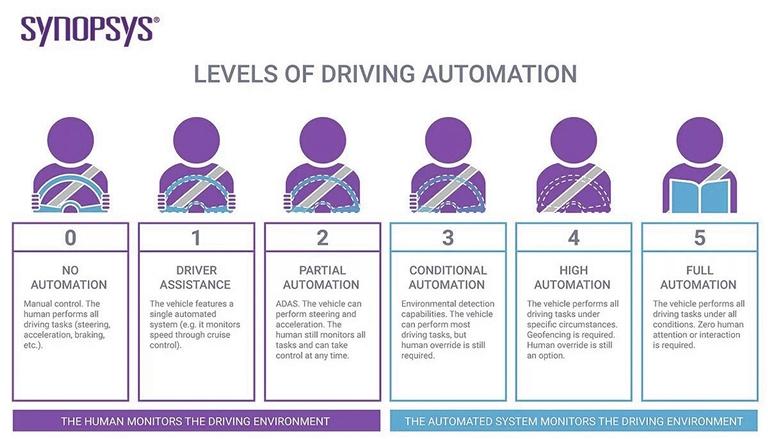




Editor’s Note: Dubbed “China’s Silicon Valley,” Shenzhen is known for its dynamic tech industry. In this “Hi Tech” series, we’ll take you behind the scenes of the city’s innovative tech companies, showcasing their cutting-edge products and interviewing the brilliant minds behind them. Chen Siqi vankochensq@163.com BUCKLE up, tap the onboard screen, and you’re off — without a driver behind the wheel. Autonomous vehicles are becoming part of everyday life in Shenzhen, now a hub for the technology. From driverless buses to autonomous taxis, the city is leading the way in making these innovations accessible to the public. Galvanized by a growing technological prowess, supportive regulations, and investor enthusiasm, the city’s autonomous driving industry is speeding towards large-scale commercialization. The driverless minibuses that began operating in Qianhai at the end of July were an instant hit, drawing a large number of residents to witness the advanced technology in action. Driverless minibuses In April 2023, the Shenzhen Bus Group partnered with SenseAuto, a global provider of Artificial General Intelligence (AGI) technology for smart vehicles, to develop smart buses. This year, the first driverless minibus lines operated by a public transport company were launched. The Qianhai driverless minibus fleet, composed of 20 vehicles, operates with L4 autonomous driving capability, allowing the vehicles to handle all driving tasks in specific conditions while under the supervision of a specially trained driver who can take over if necessary. “You see, there’s a screen. You can observe how the vehicle operates. You can see the cars and people around the bus, and you can even see the bikes,” said a passenger surnamed Luo, who traveled from Bao’an District to be one of the first to ride the bus. The screen functions as a real-time monitor that displays the bus’ status and surrounding environment. The technologies behind the driverless system include high-precision cameras, millimeter-wave radar, and laser radar, which allows the buses to recognize lane markings and traffic signals, safely overtake other vehicles, change lanes, and precisely navigate through complex urban driving challenges. As early as 2020, Shenzhen had already introduced a driverless bus when the first intelligent connected driverless bus was unveiled in Pingshan District. In May last year, another driverless minibus was launched in the Xili subdistrict of Nanshan District. A hub for autonomous tech firms Apart from buses, autonomous driving technology has been applied to several scenarios, including self-driving taxis, autonomous street cleaners, food delivery drones, and driverless trucks. Recently, numerous autonomous road sweeping robots were introduced in the Bao’an CBD. A staff member from the cleaning services provider Pingtong mentioned that these machines, which are three to five times faster than a human, can sweep more than 8,000 square meters of walkways or road in just 40 minutes. These robots can also detect traffic lights, navigate obstacles, and operate in rainy weather, making them a valuable addition to sanitation workers. Similar devices can also be found in Lianhua Hill Park and Qianhai, among other locations. At the Mawan Smart Port, a fleet of 38 driverless trucks is operational, enabling the remote-controlled loading of containers onto vehicles. Blostered by a growing number of application scenarios, Shenzhen is currently home to over 1,300 companies dedicated to autonomous driving — the highest number in China. In 2023, the added value of Shenzhen’s intelligent connected vehicle (ICV) industry reached 76.31 billion yuan (US$10.76 billion), a 38.2% increase from the previous year. Given its supportive business environment, Shenzhen has attracted a large number of autonomous driving companies, such as RoboSense, HSAE, DeepRoute.ai, Baidu, and Pony.ai. These companies operate across various domains — from upstream perception, decision-making, and execution to midstream autonomous driving solution providers and downstream testing, evaluation, and travel services — an indicator of the city’s strong position in the ICV sector. SZ opens roads for testing During a ride on one of the driveless minibuses in Qianhai, a robotaxi operated by Chinese autonomous vehicle startup Pony.ai was also spotted on the road. Since launching in 2022, Pony.ai’s autonomous ride-hailing service has rapidly expanded in Shenzhen, covering nearly 1,500 pickup and dropoff points in key areas. In May 2023, Pony.ai obtained approval to conduct tests of fully autonomous robotaxis on public roads in Shenzhen and received the green light to launch commercial driverless services. The Pony.ai autonomous vehicles currently operating in Shenzhen boast the company’s fifth generation technology. Equipped with various sensors, including LiDAR, radar, and high-definition cameras, these vehicles work in conjunction with the company’s advanced autonomous driving software to ensure safety and reliability on the roads. “Pony.ai’s self-driving vehicles are like ‘experienced drivers’ who navigate flexibly on the road, and we ensure every trip meets the same high standards and requirements,” Jenny Zhang, a project manager at Pony.ai, told Shenzhen Daily. She added that Pony.ai’s autonomous vehicles have completed 35 million kilometers of tests on public roads. “In comparison, an ordinary driver may not accumulate 350,000 kilometers over a lifetime, which means our testing is equivalent to 100 years of a human’s driving,” Jenny explained. Earlier in August, Pony.ai received a permit to conduct autonomous driving tests on expressways in Shenzhen. This development supports Pony.ai’s plan to expand its robotaxi operations along airport routes and across contiguous urban areas. To date, Shenzhen has designated nearly 1,000 kilometers of roads for autonomous vehicle testing, including 67 kilometers of highways. ICVs are just one sector in one of the 20 strategic emerging industries being actively developed by Shenzhen, and significant progress has been made in this sector. In 2022, Shenzhen introduced China’s first regulations for ICVs, addressing legal gaps in the domestic ICV industry. These regulations outline rules and management procedures for ICVs in areas such as market access, registration, accident handling, and legal liability. Last year, the city issued the country’s first Level 3 (L3) highway testing license. As of May this year, Shenzhen had opened a total of 944 kilometers of roads for autonomous vehicle testing and approved 1,037 road tests and demonstration applications for 349 ICVs from 19 enterprises. | 
